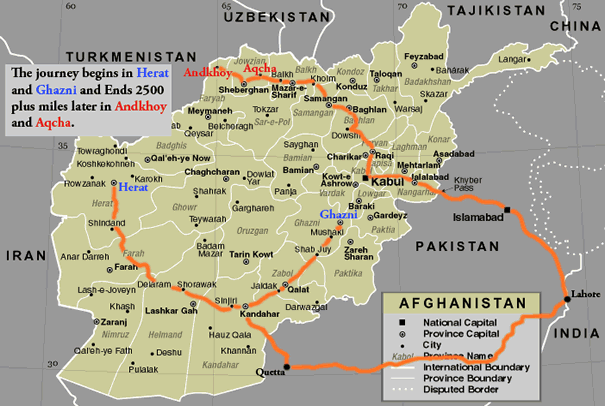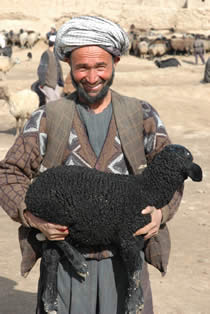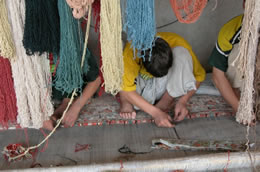Your wish list is empty.
Oriental Rugs » Journey of the Wool
The Journey of the Wool
From Sheep to Carpet, An Amazing Story


Afghan herder and sheep.
The best wool is sheared in the spring and gathered from the of Providence of Ghazni southwest of Kabul as well as in the most westerly Providence of Herat, Afghanistan.
It is then taken on a 400 miles journey south by truck over bumpy and dangerous dirt roads through Kandahar, a Taliban-controlled area in the south of Afghanistan. The wool crosses over Khojak Pass near Chaman before arriving at Quetta, Pakistan.
It is here that the wool is hand-carded and hand-spun by the Mogol and Larhabi tribal people. These rural people have the skill to hand card and spin the wool at affordable prices.
The wool then is loaded back onto the trucks for another long journey of 1200 miles East to Lahore, Pakistan. Lahore is the center for all the wool to be naturally dyed using various plant and root substances.
The wool is again loaded back onto trucks and taken north on another 400-mile journey to Kabul where some of it is given to Hazara weavers. Then the trucks travel another 400 miles over a high snowy mountain pass named Salang to the northwestern towns of Aqcha and Andkhoy. The wool has finally arrived at the homes of the Ersari and Turkmen weavers where looms are waiting to weave more magnificent Barakat cultural survival rugs.
This journey from sheep to weaver is 2500 miles. The question must be asked…why spend so much time and energy on the preparation and dyeing of wool even before a knot is affixed to a loom?
Hand spun and hand carded wools are far more durable than machine spun wools because they use long wool fibers and do not compromise the wool by the use of oils and other chemicals in processing. This natural process also keeps the high lanolin content, which is the main ingredient for repelling dirt and giving a lustrous glow to the wool. This hand carded and hand spun wool takes the dyes unevenly, creating what we call abrash. This gives dimensionality and the character and feel that we love in old rugs.
The Journey Continues…

Afghan weavers making a rug with
vegetable dyed wool.
The weaving of a rug could take anywhere from a few months to a more than a year, often with a number of weavers sitting side by side at a loom. When the rug is finished it is inspected for quality and then put on trucks for the 800-mile journey back to Lahore, Pakistan. It is here in Lahore that they are clipped to create an even pile before being washed.
The carpets are once again loaded onto a truck for another 1200 miles trip to Karachi, Pakistan where they will be rolled into containers and shipped to the United States, which is another 14000-mile journey.
The End Result
The hand carding and hand spinning of the wool is an incredible amount of work. But, all of the effort is worth it when you see and feel the lustrous wool that allows the rugs to become the antiques of the future.


